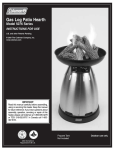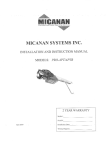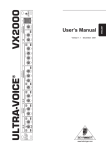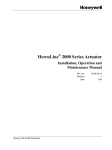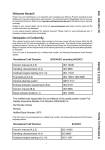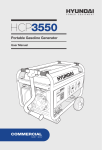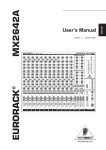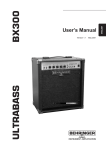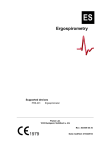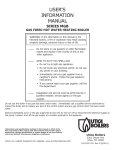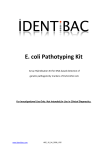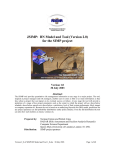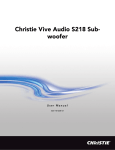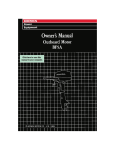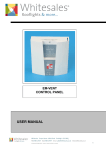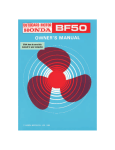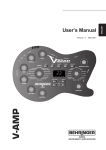Download Thank you for purchasing a Honda Outboard Motor.
Transcript
Thank you for purchasing a Honda Outboard Motor. This manual describes the operation and maintenance of the Honda Outboard Motor: BFX All information in this publication is based on the latest product information available at the time of printing. Honda Motor Co., Ltd. reserves the right to make changes at any time without notice and without incurring any obligation. No part of this publication may be reproduced without written permission, This manual should be considered a permanent part of the Outboard Motor and it must stay with the Outboard motor if resold. READ THIS OWNER’S MANUAL CAREFULLY. Pay special attention these that symbols and any instructions m Indicates not followed. serious injury or death WILL result Indicates a strong possibility result if instructions are not followed. CAUTION: instructions j-TGiEq instructions Indicates a possibility are not followed. Indicates that equipment are not followed. to follow. that that serious minor or property if instructions injury injury damage are or death may could could result if result if Honda Outboard Motors are designed to give safe and dependable service if operated according to instructions. Operating this Outboard Motor requires special effort on your part to ensure your safety and the safety of others. Careless operation or misuse may cause injury or property and understand this owner’s manual before operating Motor. damage. Read the Outboard If a problem should arise, or if you have any questions about your Outboard Motor, see an authorized Honda Outboard Motor dealer. HONDA MOTOR CO., LTD. 1990, ALL RIGHTS RESERVED 1 CONTENTS 1. 2. 3. 4. 5. 6. 7. 8. 9. 10. 1 1. 12. 2 SAFETY ......................................................................................................... 3 COMPONENT IDENTIFICATION .................................................................. 5 INSTALLATION ........................................................................................... .7 PRE-OPERATION CHECK.. ......................................................................... .9 STARTING THE ENGINE ............................................................................ 13 OPERATION.. ............................................................................................. .18 STOPPING THE ENGINE ............................................................................ 24 MAINTENANCE ......................................................................................... .26 TRANSPORTING/STORAGE .................................................................... 35 TROUBLESHOOTING ................................................................................ 37 SPECIFICATIONS.. .................................................................................... .38 WARRANTY SERVICE.. ........................................................................... .39 1. SAFETY Safety label locations Read all safety instructions before using the Outboard Motor. . GASOLINE ONLY (0.3 U.s.pal . WIPE OFF SPUEO GASOLINE WHEN CARRYING. SMUT BREATHER 1 Liw.,, BEFORE STARTING. VALVE. 3 SAFETY INFORMATION For your safety precautions. l l l l l l l l l l l l l l l and the safety of others, pay special attention to these Know how to stop the engine quickly in case of emergency. Understand the use of all controls. Do not exceed the boat manufacturer’s power recommendation, and be sure the outboard motor is properly mounted. Never permit anyone to operate the outboard motor without proper instruction. Stop the engine immediately if anyone falls overboard. Do not run the motor while the boat is near anyone in the water. Attach the emergency stop switch lanyard securely to the operator. Before operating the outboard motor, familiarize yourself with all laws and regulations relating to boating and the use of outboard motors. Do not attempt to modify the outboard motor. Always wear a PERSONAL FLOTATION DEVICE (PFD) when on board. Exhaust contains poisonous carbon monoxide which can cause unconsciousness and may lead to death. Never run the outboard in a closed garage or confined area. Gasoline is extremely flammable and is explosive under certain conditions. Refuel in a well ventilated area with the engine stopped. Do not smoke or allow flames or sparks where the engine is refueled or where gasoline is stored. Do not overfill the fuel tank. After refueling make sure that the fuel tank cap is closed properly and securely. Be careful not to spill any fuel while refueling. Spilled fuel or fuel vapor may ignite. If any fuel is spilled make sure that the area is dry before starting the engine. Do not remove any guards, labels, shields, covers or safety devices; they are installed for your safety. 2. COMPONENT ENGINE STOP SWITCH IDENTIFICATION ENGINE SERIAL NUMBER ENGINE COVER CTARTFRCRIP -.-...-.. \ \ / EMERGENCY ENGINE STOP LANYARD \ ENGINE COVER LOCK BAND OIL FILLER CAP w CLAMP SCREW urn LLI....” STERN BRACKET FRICTION BOLT ADJUSTING ROD ANTI-VENTILATION WATER INTAKE PLATE SCREEN ANODE METAL GEAR OIL LEVEL PLUG GEAR OIL DRAIN PLUG A PROPELLER 5 FUEL HLLER CAP CASE PROTECTOR \ \ , THROTTLE LEVER TILLER HANDLE OIL LEVEL INSPECTION WINDOW FUEL VALVE LEVER TILT LEVER FRAME SERIAL NUMBER *Always list the serial when ordering parts. I GA? \ ’ WATER CHECK HOLE 3. INSTALLATION It is your responsibility to choose a boat suitable for the engine. 2.0 HP (1.5 kW) Do not exceed facturer’s power Damage and injury 1 . Installation the boat manurecommendation. may result. STERN CENTER TRANSOM HEIGHT position install at the stern, at the center line of the boat. 2. Installation height For proper propeller depth and engine cooling, the boat’s transom height must match the motor’s shaft length. This outboard motor is intended for TERSURFACE use with boats that have a transom height of: 380 mm (15.0 in) Once the boat is in the water and loaded, check proper motor depth by 100 mm(3.9 in) looking at the anti-ventilation plate: with the motor not running, the plate ANTi-VENTILATON should be below the surface of the PLATE water. It should be about: 100 mm (3.9 in) During operation, check to be sure the anti-ventilation plate remains under water at all times and that water flows from the water check hole. Excessive or imbalanced loading will affect the motor’s water depth. Loading too far forward will raise the motor out of the water, reducing engine cooling. Loading too much or too far rearward will push the motor deeper, reducing performance. Insufficient water cause overheating supply (anti-ventilation plate out of the water) that will damage the outboard motor. may 7 3. Motor attachment Attach the stern bracket to the transom and tighten the clamp screws. CAUTION: l Before operating the boat, check the tightness of the clamp screws. l Tie a rope through the hole in the stern bracket and secure the other end of the rope to the boat. This will prevent accidental loss of the motor. v STERN BRACKET SAFETY ROPE 4.Motor \ CLAMP SCREW angle (cruising) Adjust the motor so the propeller shaft is parallel with the water surface. INCORRECT CAUSES BOAT TO “SQUAT” CORRECT GIVES MAXIMUM 5. Motor PERFORMANCE angle adjustment lf the propeller shaft is not parallel with the water surface, adjust by changing the transom angle adjusting bolt position. There are four adjusting stages. 1. Loosen the wing nut to free the adjusting bolt. 2.Adjust the angle of the motor, and tighten the wing nut. Be sure that the bolt head and wing nut are seated in one of the four recesses on the adjustment slot. 1 NOTICE ] To prevent adjusting 8 INCORRECT CAUSES BOAT TO “PLOW” ADJUSTING damage to the bolt is locked. motor or boat, make sure BOLT AND WING NUT the transom angle 4. PRE-OPERATION CHECK 1. Engine oil level ( NOTICE 1 l l Engine oil is a major factor affecting engine performance Nondetergent and low quality oils are not recommended, have inadequate lubricating properties. Running the engine with insufficient oil can cause damage. and sevice life. because they serious engine Use Honda 4-stroke oil, or an equivalent high detergent, premium quality motor oil certified to meet or exceed U.S. automobile manufacturer’s requirements for Service Classification SG, SF/CC, CD. -20 0 20 40 60 60 lO(PF Motor oils classified SG, SF/CC, CD will -30 -20 -10 0 10 20 30 40-c show this designation on the container. SAE lOW/30 is recommended for general, all-temperature use. Other viscosities shown in the chart may be used when the average temperature in your area is within the indicated range. 1. Position the outboard motor vertically, and check the oil level in the oil level inspection window. 2. If the oil level is down toward the lower level mark on the window, fill up to the upper level mark on the dipstick. 0.40 0 (0.42 US qt ,0.35 Imp qt) OIL LEVEL INSPECTION WINDOW UPPER LEVEL 0.40 Q (0.42 US qt. 0.35 Imp qt) LOWER LEVEL 0.20Q (0.21 US qt, 0.18 Imp qt) DIPSTICK 9 2. Fuel level Remove the filler cap and check the fuel level. Refill the tank if the fuel level is low. Fuel tank capacity: 1 .O !J (0.26 US gal, 0.22 Imp gal) Gasoline is extremely flammable, and gasoline vapor can explode, causing serious injury or death. Do not smoke or allow flames or sparks in your working area. KEEP OUT OF REACH OF CHILDREN. NOTE: Open the vent knob before removing the fuel filler cap. When the vent knob is firmly closed, the cap will be difficult to remove. FUEL FILLER CAP Recommended VENT KNOB FUEL TA fuel Your engine is designed to use any gasoline that has a pump octane number (R +M)/2 of 66 or higher, or that has a research octane number of 91 or higher. Gasoline pumps at service station normally display the pump octane number. We recommend that you use unleaded fuel because it produces fewer engine and spark plug deposits and extends the life of exhaust system components. Never use stale or contaminated gasoline or an oil/gasoline mixture. Avoid getting dirt, dust or water in the fuel tank. Use of a lower octane gasoline can cause persistent “pinging” or heavy “spark knock” (a metallic rapping noise) which, if severe, can lead to engine damage. If “spark knock” or “pinging” occurs at a steady engine speed under normal load, change brands of gasoline. If spark knock or pinging persists, consult your authorized Honda dealer. Failure to do so is considered misuse, and damage caused by misuse is not covered by Honda’s Limited Warranty. 10 Occasionally you may experience light spark knock while operating under heavy loads. This is no cause for concern, it simply means your engine is operating efficiently. After refueling, be sure to tighten the fuel tank cap firmly. GASOLINES CONTAINING ALCOHOL If you decide to use a gasoline containing alcohol (gasohol), be sure it’s octane rating is at least as high as that recommended by Honda. There are two types of “gasohol”: one containing ethanol, and the other containing methanol. Do not use gasohol that contains more than 10% ethanol. Do not use gasoline containing methanol (methyl or wood alcohol) that does not also contain cosolvents and corrosion inhibitors for methanol. Never use gasoline containing more than 5% methanol, even if it has cosolvents and corrosion inhibitors. NOTE: l Fuel system damage or engine performance problems resulting from the use of fuels that contain alcohol is not covered under the warranty. Honda cannot endorse the use of fuels containing methanol since evidence of their suitability is as yet incomplete. l Before buying fuel from an unfamiliar station, try to find out the fuel contains alcohol, if it does, confirm the type and percentage of alcohol used. If you notice any undesirable operating symptoms while using a gasoline that contains alcohol, or one that you think contains alcohol, switch to a gasoline that you know does not contain alcohol. 11 3. Pre-operation check list: @Check the propeller, the shear pin, and the cotter pin to be sure they are secure and undamaged. @Check the stern bracket to be sure the motor is securely installed. @Check tiller handle operation. @Check the condition of the fuel cap and fuel cap gasket. Replace the fuel cap and fuel cap gasket if they are cracked or damaged. @Make sure you have the tool kit and spare parts with you (P. 27). @Check the anode metal for damage, looseness or excessive corrosion. The anode metal helps to protect the outboard motor from corrosion damage; it must be exposed directly to the water whenever the motor is in use. Replace the anode metal when it has been reduced to approximately one half of its original size. 1 NOTICE ] The possibility of corrosion damage painted over or allowed to deteriorate. increases if the anode The following materials should be kept with the boat: 1. Owner’s Manual. 2. Tool Kit. 3. Spare engine oil, spark plugs, propeller and propeller cotter pins. 4. Required information regarding boating laws and regulations. 12 metal is 5. STARTING THE ENGINE Exhaust contains poisonous carbon monoxide which can cause unconsciousness and may lead to death. Never run the outboard in a closed garage or confined area. [NOTICE The anti-ventilation plate must be lowered into the water and be at least 2 inches below the surface. Running the outboard motor out of the water will damage the water pump and overheat the engine. 1. Open the fuel cap vent knob 2 to 3 turns. FUEL CAP VENT KNOB FUEL FILLER CAP 2. Turn the fuel valve lever ON. FUEL VALVE LEVER 3. Engage the emergency stop switch clip located at one end of the emergency stop switch lanyard with the engine stop switch. Attach the other end of the emergency stop switch lanyard securely to the operator. If the operator does not attach the emergency stop switch lanyard, and is thrown from his seat or out of the boat, the out-of-control boat can seriously injure the operator, passengers, or bystanders. Always properly attach the lanyard before starting the motor. 13 NOTE: l The engine will not start unless the emergency engaged with the engine stop switch. l A spare emergency stop switch clip is provided in the tool bag. EMERGENCY stop switch clip is ENGINE STOP SWlTCH STOP SWITCH CLIP SPARE EMERGENCY STOP SWrrCH CLIP 4. Move the throttle EMERGENCY STOP SWlTCH LANYARD lever to the START position, THROTTLE LEVER CAUTION: Do not start the engine with the throttle lever in the FAST the boat will move suddenly when the engine starts. position, or 5. If the engine is “cold”, pull out the choke knob for starting and then push it in gradually as the engine warms up. CHOKE KNOB 14 6. Pull the starter rope slowly until a resistance is felt, then pull briskly. [I , . Do not allow the starter grip to snap back against the engine. Return it gently to prevent damage to the starter. . Do not pull the starter grip while the engine is running, as that may damage the starter. i STARTER GRIP 7, . After starting, be sure water is flowing out of the water check hole. If water does not flow out, or if steam comes out, stop the engine. Check to see if the screen in the cooling water inlet is obstructed. Do not operate the engine until the problem has been corrected. O.K. NORMAL FLOW x V INTAKE OBSTRUCTED WATER CHECK HOLE 15 8. If the choke was used, push it in gradually as the engine warms up. 16 Emergency starting If the recoil starter is not working properly, the engine can be started with the spare starter rope in the tool kit. 1. Remove the engine cover. 2. Remove the recoil starter by removing the three 6 mm nuts. 3. Wind the spare rope clockwise around the pulley, and then pull it straight out to start the engine. [ Keep clear of moving parts. 4. Leave the recoil starter off and reinstall engine cover. Exposed moving parts can cause injury. Use extreme care when installing the engine cover. Do not operate the outboard motor without the engine cover. ENGINE COVER STARTER ROPE 6mm 6. OPERATION 1. Cruising For the first 10 hours of operation, run the outboard motor at low speed, and avoid abrupt operation of the throttle. Turn the throttle lever toward FAST to increase speed. For normal cruising, open the throttle about 3/4. NOTE: For best performance, passengers and equipment evenly to balance the boat. I 18 should be distributed THROTTLE LEVER 2. Steering To turn to the right, swing the tiller handle to the left. To turn to the left, swing the tiller handle to the right. LEFT TURN Swing the tiller handle to the right. RIGHT TURN Swing the tiller handle to the left. The steering friction should be adjusted so that stable boat operation maintained with a minimum of operator effort. is STEERING FRICTION BOLT 19 3. Reverse 1. Move the throttle lever to the SLOW position. Before rotating the motor (from either forward to reverse or from reverse to forward) reduce the engine speed to SLOW, or the boat could capsize. TH 2. To reverse direction, handle as shown. turn the motor 1SO’, and then pivot the steering When operating in reverse, proceed with underwater obstructions with the propeller. 20 caution to avoid hitting any 4.Tilting the motor Tilt the motor to prevent the propeller and gear case from hitting bottom when the boat is beached or stopped in shallow water. 1. Stop the engine and turn the fuel valve lever off. 2. Close the fuel cap vent knob. 3. With the motor in the forward position, raise the motor using the handle on the engine cover. The spring-loaded tilt lever will automatically move into position and hold the motor when it reaches approximately 75’ . 4.Adjust the steering friction bolt to keep the motor from moving. If the motor is tilted in the reverse position, crankcase oil will enter the cylinder and may cause difficult starting or may prevent the engine from being cranked. If this occurs refer to the TROUBLESHOOTING section (page 37 1. 5. To return the motor to the normal RUN position, hold the motor by the handle on the engine cover and pull the tilt lever toward you, then lower the motor slowly. CARRYING HANDLE FUEL CAP VENT KNOB TILT LEVER Do not use the tiller handle to tilt the outboard motor. 21 1 NOTICE ] To avoid damaging the motor, use the utmost care when mooring a boat, especially when its motor is tilted up. Don’t allow the motor to strike against the pier or other boats. NO To avoid damaging moving the boat. the motor, never use it as a handle for lifting or .-- Trailering When trailering or transporting the boat with the motor attached, it is recommended that the motor remain in normal running position with the steering friction bolt tightened securely. Do not trailer or transport the boat with the motor in the tilted position. The boat or motor could be severely damaged if the motor drops. The motor should be trailered in the normal running position. If there is insufficient road clearance in this position, then trailer the motor in the tilted position using a motor support or remove the motor from the boat. 22 device such as a transom saver bar, l High attitude operation At high altitude, the standard carburetor air-fuel mixture will be excessively rich. Performance will decrease, and fuel consumption will increase. High altitude performance can be improved by installing a smaller diameter main fuel jet in the carburetor and readjusting the pilot screw. If you always operate the outboard motor at altitudes higher than 6,000 feet above sea level, have your authorized Honda Outboard Motor dealer perform these carburetor modifications. Even with suitable carburetor jetting, engine horsepower will decrease approximately 3.5% for each 1,000 foot increase in altitude. The affect of altitude on horsepower will be greater than this if no carburetor modif ication is made. 1 NOTICE 1 Operation of the outboard motor at an altitude lower than the carburetor is jetted for may result in reduced performance, overheating, and serious engine damage caused by an excessively lean air/fuel mixture. 23 7. STOPPING UHE ENGEME l In an emergency Disengage the emergency stop switch clip from the engine stop switch by pulling the emergency stop switch lanyard. NOTE: lt is a good idea to stop the engine with the emergency stop switch lanyard from time to time to be sure that the switch is operating properly. \ ENGINE STOP SWITCH r EMERGENCY STOP S WITCH l In normal LANYARD ‘/ iRGENCY STOP SWITCH CUP use 1. Move the throttle lever to the SLOW position. 2. Push the engine stop switch until the engine stops. 3. Remove the emergency stop switch lanyard and store it. ENGINE STOP SWITCH I 24 3. Turn the fuel valve lever OFF. / FUEL VALVE LEVER 4. Close the fuel cap vent knob. FUEL CAP VENT KNOB In the event that the engine does not stop when you depressed the engine stop switch, pull the emergency stop switch lanyard. If the engine continues to run, pull the choke knob to stop the engine. 25 8. MAINTENANCE Periodic maintenance and adjustment are important to keep the motor in rating condition. Inspect or service as scheduled- below. Shut off the engine before performing any maintenance. If the engine must be run, make sure the area is well ventilated. Never run the engine in an enclosed or confined area. Exhaust contains poisonous carbon monoxide gas; exposure can cause loss of consciousness and may lead to death. piiiezq l If the engine must be run, make sure there is water at least 2 inches above the anti-ventilation plate, otherwise the water pump may not receive sufficient cooling water, and the engine will overheat. l To maintain cooling system efficiency, flush the outboard motor with fresh water after each use in salt water or dirty water. l Use only genuine HONDA parts or their equivalent. The use of replacement parts which are not of equivalent quality may damage the motor. Maintenance schedule month hour intervals, Spark plug Check-clean Shear pin Check 0 Lubrication Grease Fuel tank and filter Clean Combustion CleakRelap chamber L or operating (aThese owner more items frequently should has the proper professional maintenance 26 Every Check lRep!ace 11necessary) Lubricate (3) For I O(l) 300 hours I I 0 dealer, unless (2) and valves Fuel line NO #TE:(l) O(l) used in salt water. be serviced by an authorized tools commercial intervals. Every when and is mechanically use, log Honda proficient. hours of 2 years outboard (2) See the Honda operation to Shop determine the Manual. proper 1 .Tool kit and spare parts The following tools and spare parts are supplied with the outboard motor for maintenance, adjustment, and emergency repairs. Tool kit 0 FLAT SCREWDRIVER TOOL 10x 12mm BAG D a PHILLIPS WRENCH 0 m PLIERS SCREWDRIVER SPARE le SOCKET [I-3 SPARK WRENCH PLUG EMERGENCY SCREWDRIVER STARTER ROPE HANDLE EMERGENCY STOP SWITCH CLIP COTTER SHEAR PINS PINS 27 2. Engine oil change Drain the oil while the engine is still warm to assure rapid and complete draining. 1 .Turn the fuel valve lever OFF, and close the fuel cap vent knob. 2. Remove the oil filler cap, and turn the motor on its side to drain the oil. 3.Stand the engine in an upright position, and fill the crankcase with the recommended oil (see page 9 ). Check the oil level with the dipstick resting on the filler opening (do not screw in). Fill to the upper level mark. Oil capacity: 0.40 0 (0:42 US qt ,0.35 Imp qt) OIL FILLER CAP UPPER LEVEL 0.40 0 ‘-A (0.42 US qt. 0.35 Imp qtl LOWER LEVEL 0.20 L? (0.21 US qt. 0.18 Imp qt) -7 DIPSTICK OIL FILLER CAP CAUTION: Used motor oil may cause skin cancer if repeatedly left in contact with the skin for prolonged periods. Atthough this is unlikely unless you handle used oil on a daily basis, it is still advisable to thoroughly wash your hands with soap and water as soon as possible after handling used oil. NOTE: Please dispose of used motor oil in a manner that is compatible with the environment. We suggest you take it in a sealed container to your local oil reclamation station. Do not throw it in the trash, pour it on the ground, down a drain, or into the water. 28 3. Gear oil check/change Recommended Oil Capacity: oil: Marine SAE 90 hypoid gear oil API Service Classification (GL-4 or GL-5) 0.05 IY!(0.05 US qt ,0.04 Imp qt) Oil level check Check the oil level when the motor is in the vertical position. Remove the level plug and see if oil flows out. If no oil flows out, use a commercially available oil pump or squeeze tube to fill the gear case with the recommended gear oil. Pump or squeeze fresh oil through the OIL DRAIN plug hole until oil begins flowing out through the OIL LEVEL plug hole. If there is water in the oil, the water will flow out first when the drain plug is removed, or the oil will be a milky color. If water is detected in the oil, the outboard motor an authorized Honda Outboard Motor dealer. should be inspected by Oil change Remove the level plug and drain plug and allow the gear oil to thoroughly drain into a suitable container. Pump or squeeze the recommended gear oil through the OIL DRAIN plug hole until oil starts flowing out through the OIL LEVEL plug hole. Use new sealing washers and install the oil level plug first and then the oil drain plug. Tighten securely. 4.Starter rope check Check the starter rope every 6 months or after every 100 hours of outboard motor operation. Replace the rope if it is frayed. Always keep a replacement starter rope in your kit. 29 5.Spark plug service Recommernded spark plug: BMR-4A(NGK) 1. Remove the engine cover. 2. Remove the spark plug cap. 3. Use the wrench supplied in the tool kit to remove the spark plug. 4.Visually inspect the spark plug. Discard the spark plug if there is apparent wear, or if the insulator is cracked or chipped. Clean the spark plug with a wire brush if it is to be reused. 5. Measure the plug gap with a feeler gauge. Correct as necessary by carefully bending the side electrode. The gap should be : 0.60-0.70 mm (0.024-0.028 in) 6.Check that the spark plug washer is in good condition, and thread the spark plug in by hand to prevent cross-threading. 7.After the spark plug is seated, tighten with a spark plug wrench to compress the washer. NOTE: If installing a new spark plug, tighten l/2 turn after the spark plug seats to compress the washer. If reinstalling a used spark plug, tighten l/8- l/4 turn after the spark plug seats to compress the washer. 8. Install the engine cover. l l The spark plug must be securely tightened. An improperly tightened plug can become very hot and may cause engine damage. Use only the recommended spark plug or equivalent. A spark plug which has an improper heat range may cause engine damage. PLUG GAP 0.60-0.70 mm (0.024-0.028 in) 6. Cleaning and flushing After each use in salt water or dirty water, thoroughly outboard motor. clean and flush the 1. Wash the outside of the outboard motor with clean, fresh water. 2. Remove the propeller. 3.Stand the motor in a suitable container of water. The water level must be at least 2 inches above the anti-ventilation plate. NOTE: Maintain the water level at least 2 inches above the anti-ventilation plate. 4. Start the engine and run slowly for at least 10 minutes. .ATION PLATE For safety, the propeller must be removed. Be sure the outboard motor is securely mounted, and do not leave it unattended while running. .. Keep children and pets away from the area, and stay clear of moving parts during this procedure. l l Gthe engine without water can cause serious engine damage due to overheating. Be sure that water flows from the water check hole while the engine is running. If not, stop the engine and determine the cause of the problem. 31 7. Lubrication Apply marine anti-corrosion grease to the following areas: CLAMP SCREW SWIVEL CASE GREASE NIPPLE ADJUSTING ROD \ ’ PROPELLER SHAFT NOTE: Apply anti-corrosion 32 oil to pivot surfaces where grease cannot penetrate. 8. Shear pin change A shear pin is used to protect the propeller and drive mechanism from damage when the propeller strikes an obstruction. 1. Remove the cotter pin and the propeller. 2. Remove the broken shear pin and replace it with a new one. 3. Install the propeller. 4. Install a new cotter pin, and spread the ends as shown in the illustration. (1 When replacing water. Precaution the shear pin, be careful concerning not to drop the propeller into the the propeller The propeller rotates at high speed when the boat is moving. Before setting off, therefore, check the propeller blades for damage or deformation, and if there are any abnormalities replace the propeller. Carry a spare propeller in case of an unforeseen accident on the water. If a spare propeller is not available and an accident does occur, return to shore carefully while running the engine at low speed. COTTER PIN SHEAR PIN 1 SPARE SHEAR PINS AND COTTER PINS 33 9. Servicing a submerged motor A submerged motor must be serviced immediately after it is recovered from the water in order to minimize corrosion. If there is a Honda outboard motor dealership nearby, take the motor immediately to the dealer. If you are far from a dealership, proceed as follows: l.Remove the engine cover, and rinse the motor with fresh water to remove salt water, sand, mud, etc. 2. Drain the fuel tank into a suitable container. 3.Loosen the carburetor drain screw (p. 35 1, drain the contents of the carburetor into a suitable container, then tighten the drain screw. 4.Change the engine oil (p. 28 1. If there was water in the engine crankcase, or the used engine oil showed signs of water contamination, then a second engine oil change should be performed after running the engine for l/2 hour. 5. Remove the spark plug. Disengage the emergency stop switch clip from the engine stop switch and pull the recoil starter several times to completely expel water from the cylinder. l l When cranking the engine with an open ignition circuit (spark plug removed from the ignition circuit), disengage the emergency stop switch clip from the engine stop switch to prevent electrical damage to the ignition system. If the motor was running when it submerged, there may be mechanical damage, such as bent connecting rods. If the engine binds when cranked, do not attempt to run the motor until it has been repaired. 6. Pour a teaspoon of engine oil into the spark plug hole, then pull the recoil starter several times to lubricate the inside of the cylinder. Reinstall the spark plug and engage the emergency stop switch clip with the engine stop switch. 7. Attempt to start the engine. If the engine fails to start, remove the spark plug clean and dry the electrode, then reinstall the spark plug and attempt to start the engine again. If the engine starts, and no mechanical damage is evident, continue to run the engine for l/2 hour or longer (be sure the water level is at least 2 inches above the anti-ventilation plate). 8. As soon as possible, take the motor to a Honda outboard motor dealer for inspection and service. 34 S.TRANSPORTING/STORAGE 1. Drain the water from the extension case. Disengage the emergency stop switch clip from the engine stop switch to prevent starting, pull the starter rope several times to expel the water from the extension case. l l If the outboard motor is put on its side immediately after stopping it without completely draining the cooling water, water may enter the engine from the exhaust port. Be sure to drain the cooling water before putting the outboard motor on its side. In cold weather, the water must be expelled from the extension case to prevent ice from forming in the water pump and water tube. 2. Drain the fuel l l Be fuel the Do careful not to spill fuel. Spilled fuel or fuel vapor may ignite. If any is spilled, make sure the area is dry before storing or transporting motor. not smoke or allow flames or sparks where fuel is drained or stored. -1. Turn the fuel valve lever OFF. -2. Remove the fuel filler cap and drain the gasoline from the fuel tank into a suitable container. -3.Turn the fuel valve lever ON, loosen the carburetor drain screw, and drain the gasoline into a suitable container. -4. After draining, retighten the drain screw. -5. Make sure the fuel cap vent knob is turned to OFF. DRAIN SCREW 35 3.To carry, hold the motor by the carrying handle. Do not carry by the engine cover. 4,Transport and store the motor either vertically or horizontally, as shown here. Vertical transport or storage: Attach the stern bracket to a stand. 1 NOTICE l l 1 Any other leakage. If the motor transport is tilted or storage position in the reverse position, cylinder and may cause difficult starting from being cranked. If this occurs refer section, page 37 . may cause crankcase damage oil will enter or oil the or may prevent the engine to the TROUBLESHOOTING CORRECT INCORRECT CASE PROTECTOR 5. Store the outboard motor in a clean, dry area. NOTE: Before storing, clean, flush, and lubricate the outboard motor as described on pages 31 and 32 . 36 1 O.TROUBLESHOOTING Engine will not start: 1. Is the emergency stop switch clip in place? 2. Is there fuel in the fuel tank? 3. Is the fuel cap vent knob turned to open? 4. Is fuel reaching the carburetor? Loosen the carburetor float bowl. drain screw to see if there is fuel in the carburetor If any fuel is spilled, make sure the area is dry before testing plug or starting the engine. Spilled fuel or fuel vapor may ignite. the spark 5. Is the spark plug firing? a. Remove and inspect the spark plug. Clean and dry the plug, and check the electrode gap (page 30). b. install the spark plug in its cap, and ground the side electrode to any engine ground away from the spark plug hole. c. Pull the recoil starter briskly, and see if the plug sparks. d. If the spark plug is OK, reinstall it, and try to start the engine. If the plug does not spark, try the same test with a new spark plug. If there is still no spark, take the outboard motor to an authorized Honda dealer for repair. Extension case overheats: I. Is the water intake clogged? 37 r Model I BFPA Description Code Rated power Full throttle range Engine type Displacement Spark plug gap Starter system Ignition system Lubrication system Specified oil Standard BAES .2.0 HP (1.5 kW) 4,000- 5,000 rom 4-stroke side valve one cylinder 76 cm3 (4.6 cu-in) 0.60-0.70 mm (0.024-0.028 in) Recoil starter Transisterized magneto Oil slinger system Engine: API standard (SG,SF/CC,CD)SAE la30 1 Gear case: Marine SAE 90 hypoid gear oil Propeller Honda outboards are power rated in accordance with NMMA orocedures and using the ICOMIA standard 28/23. 38 13.WARRANTY Owner SERVICE satisfaction Your satisfaction and goodwill are important to your dealer and to us. All Honda warranty details are explained in the Distributor’s Limited Warranty. Normally, any problems concerning the product will be handled by your dealer’s service department. If you have a warranty problem that has not been handled to your satisfaction, we suggest you take the following action: l l Discuss your problem with a member of dealership management. Often complaints can be quickly resolved at that level. If the problem has already been reviewed with the Service Manager, contact the owner of the dealership or the General Manager. If your problem still has not been resolved to your satisfaction, contact: American Honda Motor Co., Inc. P-0. Box 100021 Duluth, Georgia 30136-9421 Telephone: (404) 497-6400 We will need the following information in order to assist you: -Your name, address, and telephone number -Product model and serial number -Date of purchase -Dealer name and address -Nature of the problem After reviewing all the facts involved, you will be advised of what action can be taken. Please bear in mind that your problem will likely be resolved at the dealership, using the dealer’s facilities, equipment, and personnel, so it is very important that your initial contact be with the dealer. Your purchase of a Honda product is greatly appreciated by both your dealer and American Honda Motor Co.,lnc. We want to assist you in every way possible to assure your complete satisfaction with your purchase. 39 Current customer service contact information: Your owner's manual was written to cover most of the questions you might ask about your Honda. Any questions not answered in the owner's manual can be answered by your Honda dealer. If your dealer doesn't have an immediate answer, they should be able to get it for you. If you have a difference of opinion with your dealer, please remember that each dealership is independently owned and operated. That's why it's important to work to resolve any differences at the dealership level. If the service personnel are unable to assist you, please discuss your concerns with the dealer management such as the Service Manager or the dealership's owner. If you need to contact American Honda regarding your experiences with your Honda product or with your dealer, please send your comments to the following address: American Honda Motor Co., Inc. Marine Division Customer Relations Office 4900 Marconi Drive Alpharetta, GA 30005-8847 Or telephone: (770) 497-6400 M-F, 8:30 am - 7:00 pm EST When you write or call, please provide the following information: • Your name, address and telephone number (complete with area code) • Model and complete serial number • Date of purchase • Name and location of the selling dealer • Name and location of the servicing dealer (if different) • A detailed description of your concerns MEMO













































